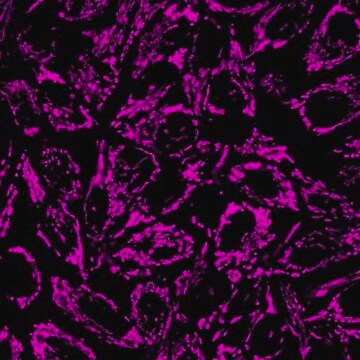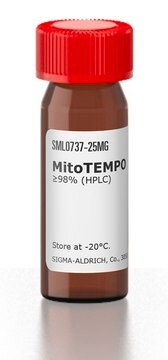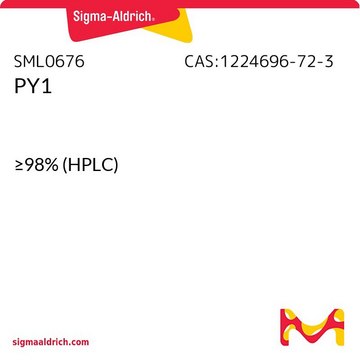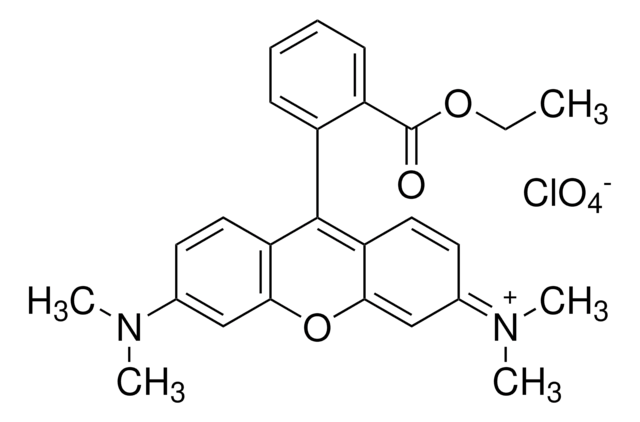53271
Mito Red
suitable for fluorescence, ≥70% (HPLC)
Synonyme(s) :
3,6-Bis(diethylamino)-9-[2-(4-methylcoumarin-7-yloxycarbonyl)phenyl]xanthylium chloride, Rhodamine B 4-methylumbelliferyl ester chloride
About This Item
Produits recommandés
Niveau de qualité
Pureté
≥70% (HPLC)
Forme
solid
Fluorescence
λex 569 nm; λem 594 nm in DMSO
Adéquation
suitable for fluorescence
Température de stockage
2-8°C
Chaîne SMILES
[Cl-].CCN(CC)c1ccc2c(-c3ccccc3C(=O)Oc4ccc5C(C)=CC(=O)Oc5c4)c6ccc(cc6[o+]c2c1)N(CC)CC
InChI
1S/C38H37N2O5.ClH/c1-6-39(7-2)25-14-17-31-33(21-25)44-34-22-26(40(8-3)9-4)15-18-32(34)37(31)29-12-10-11-13-30(29)38(42)43-27-16-19-28-24(5)20-36(41)45-35(28)23-27;/h10-23H,6-9H2,1-5H3;1H/q+1;/p-1
Clé InChI
XCVSDCPWJRHMSZ-UHFFFAOYSA-M
Description générale
Application
Code de la classe de stockage
11 - Combustible Solids
Classe de danger pour l'eau (WGK)
WGK 3
Point d'éclair (°F)
Not applicable
Point d'éclair (°C)
Not applicable
Équipement de protection individuelle
Eyeshields, Gloves, type N95 (US)
Certificats d'analyse (COA)
Recherchez un Certificats d'analyse (COA) en saisissant le numéro de lot du produit. Les numéros de lot figurent sur l'étiquette du produit après les mots "Lot" ou "Batch".
Déjà en possession de ce produit ?
Retrouvez la documentation relative aux produits que vous avez récemment achetés dans la Bibliothèque de documents.
Les clients ont également consulté
Articles
Nitric oxide (NO) as a signal transporter in neurons, endothelial cells and in the immune system.
Notre équipe de scientifiques dispose d'une expérience dans tous les secteurs de la recherche, notamment en sciences de la vie, science des matériaux, synthèse chimique, chromatographie, analyse et dans de nombreux autres domaines..
Contacter notre Service technique










